Introduction:
In the previous article we learned about the life of Lù Yǔ 陸羽, author of the famous Classic of Tea or Chá Jīng 茶經. We recommend reading it to better understand this article, in which we will examine this work, as well as the impact it had after the death of the "Sage of Tea".
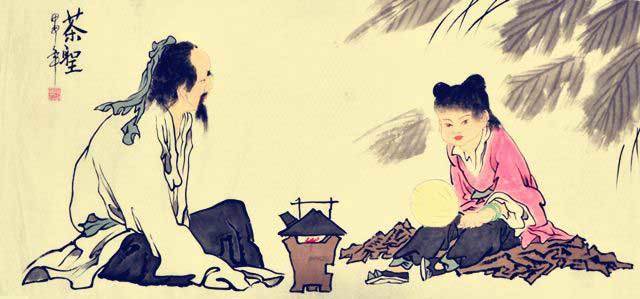
The Cha Jing or Classic of Tea
Lù Yǔ's Classic of Tea is a short work, but it covers all the important aspects concerning tea, including information on the cultivation of the plant, harvesting methods, production methods and utensils necessary for its manufacture, history, list of the largest tea-producing regions of the time, the methods of preparation of the drink and the utensils necessary to prepare and serve it.
Lù Yǔ describes all these aspects without resorting to a poetic language, but rather in a didactic and informative style. The work is intended to be more of a reference manual than a philosophical treatise.
The history of tea told by Lù Yǔ is a mythical story in which he attributes to the plant a legendary origin, crediting Shénnóng 神農 with the discovery of tea. Shénnóng is a mythical civilizing hero associated with medicine who taught humanity the secrets of agriculture. Here, Lù Yǔ presents him as the discoverer of the plant.
This myth of Shénnóng as the discoverer of tea seems to have its origin in the Chá Jīng, since there are no previous references to it. However, this association manufactured by Lù Yǔ would remain over time and be reproduced countless times until it was fixed in the popular imagination.
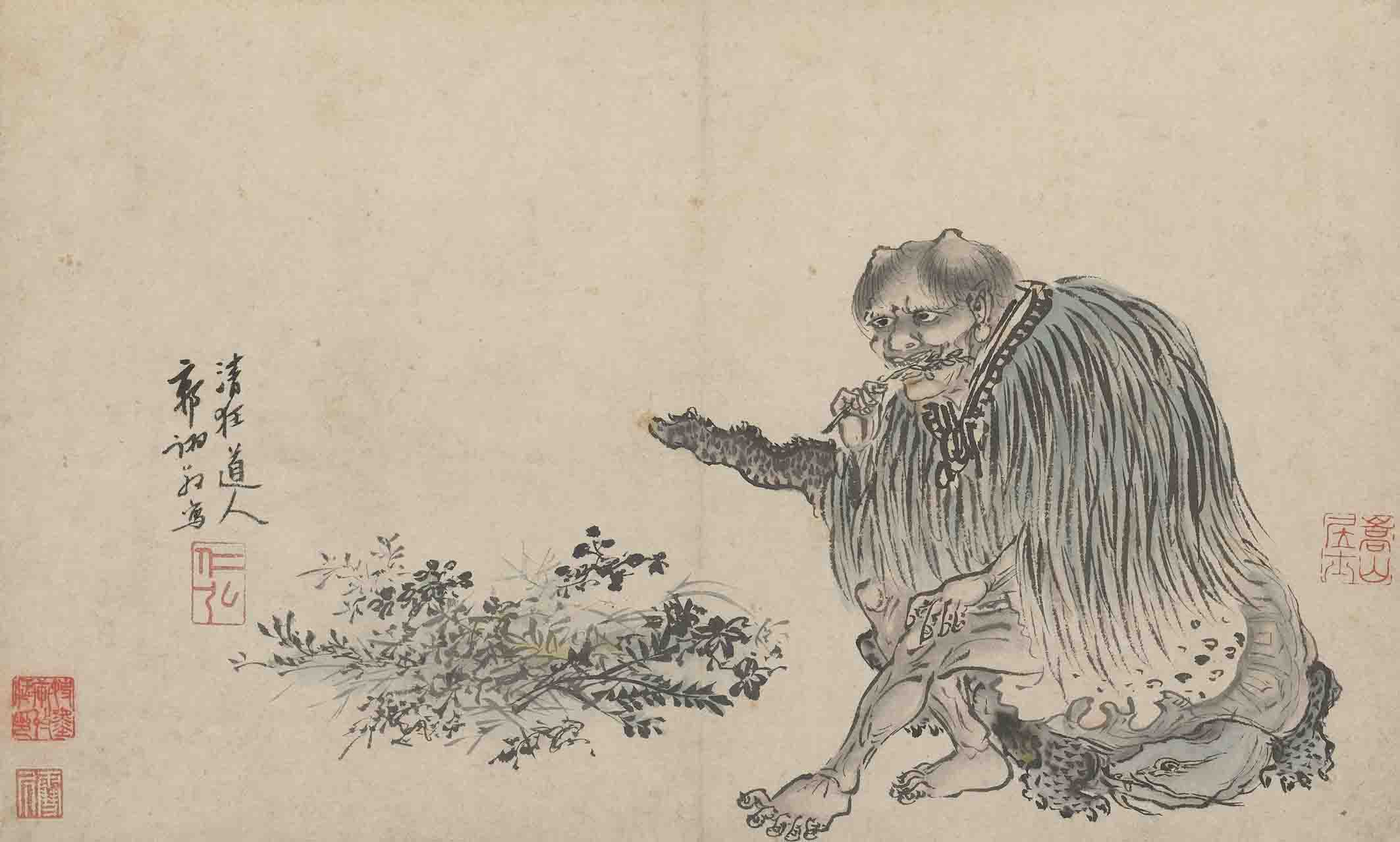
Shénnóng 神農.
In China there has always been a predilection for the ancient, while innovations have been viewed, if not with disdain, then at least with certain doubts. Thus, Lù Yǔ strives to manufacture a mythical and venerable origin for tea. In addition, he presents tea as a drink not only appreciated for its medicinal properties, but also associated with supernatural beings, citing stories in which tea appears as a good that is not easily obtained, but is protected by deities and powerful forces.
As we have already mentioned in the previous article, tea was consumed locally in some regions of southwestern China, but it was an entirely new product in most of the Táng 唐 empire. Lù Yǔ, in a way, sought to endow this new product with an old and respectable origin, thus favoring its acceptance by the population.
In the Chá Jīng, Lù Yǔ exposes his method of preparation of tea. We must say that at that time, the predominant way to prepare tea was by boiling it with other ingredients as a soup. This method was known as jiān chá 煎茶, "tea decoction". This was the method also used by Lù Yǔ, although he is expressly opposed to adding seasonings to tea, except for a pinch of salt.
The author of the Classic of Tea describes the way to prepare the drink as follows. First, the tea cake is roasted by putting it next to some embers. It is ground, and then sieved to get a very fine powder. Meanwhile, the water is boiled on a stove. At the first boil, known as "fish eyes" a pinch of salt is added. Salt not only enhances the flavour of tea but also gives more consistency to the water.
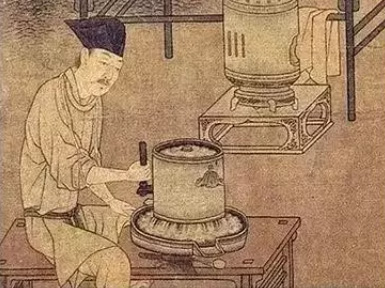
Illustration of the grinding of tea.
At the second boil, known as "chain of pearls" a "gourd" (hollowed out as a spoon) of boiling water is reserved. At this time, the water is quickly stirred in the cauldron with a bamboo spoon, introducing the ground tea into the centre. When the boiling becomes stronger and the steam rises to form clouds, the water that had been reserved is added again, stopping the boiling of the water and thus keeping the froth on the surface. Tea is then served by pouring it into bowls, covered by a generous layer of froth.
On the quality of drinking water, Lù Yǔ tells us that the best is spring water from mountain springs, followed by water from rivers and finally well water. However, to prepare tea, he prefers water that runs through the stalactites of caves or that which runs slowly on a bedrock.
Lù Yǔ also classifies the types of froth that form on top of the tea, some of which are considered good, while other types should be discarded.
Lù Yǔ's method of preparing tea enjoyed great popularity in his time, but was later replaced by other methods. For more information on the methods of preparation of tea from the Táng Dynasty onwards, see our article From "Eating Tea" to "Drinking Tea": Tea Since the Táng Dynasty.
Other works by Lù Yǔ
Lù Yǔ was a prolific author, although most of the works attributed to him have not survived to this day. In fact, the historian Ōuyáng Xiū 歐陽修, from the eleventh century, says that only the Chá Jīng survived at that time. However, Ōuyáng Xiū mistakenly thought that Lù Yǔ's autobiography was not really written by himself.
This same writer cites more than sixty works attributed to Lù Yǔ, whose subjects include historical biographies, genealogies, local history, and even dream divination.
Influence of Lu Yu and his Classic of Tea on Chinese society
Lù Yǔ was already a well-known character during the time he lived. After his death, his fame increased to such an extent that, soon after, he was worshipped as the "Sage of Tea" (茶聖 chá shèng), making figurines with his image to which merchants made offerings.
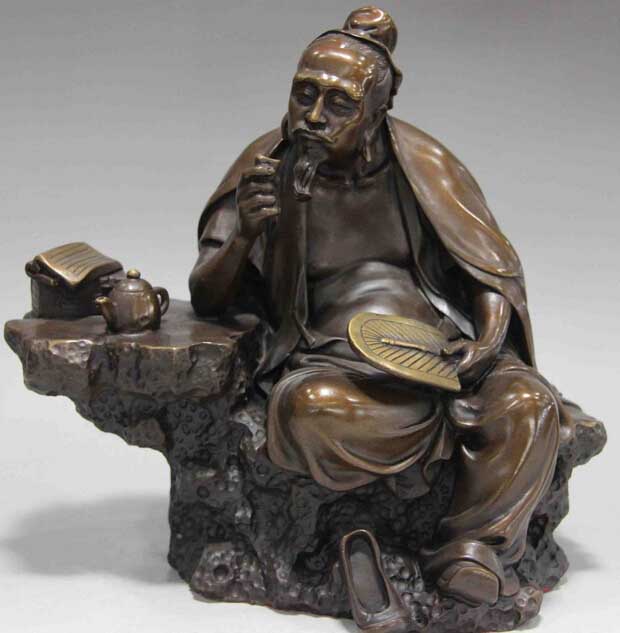
Current figurine representing Lù Yǔ 陸羽.
His most important work, the Chá Jīng or Classic of Tea, had a tremendous influence on the society of the time and promoted the consumption of the new drink throughout the Chinese territory.
In addition, the Chá Jīng marks a milestone in the history of tea, as it meant a change in the habit of drinking tea for medicinal reasons towards its consumption in all kinds of situations of social and domestic life.
As we have explained on other occasions, until the Táng dynasty alcohol had been the social drink par excellence, being used both in social gatherings and in rites and ceremonies as an offering. During Táng tea was introduced into Chinese social life as an alternative to alcohol, and this impulse of tea was largely due to the work of Lù Yǔ.
However, this change would not have been possible without the participation of all those intellectuals, monks and poets with whom Lù Yǔ surrounded himself, and all those who were inspired by the Chá Jīng to write new works related to this drink. All these literati and thinkers created around tea a particular language and aesthetics, imbuing tea with Buddhist values and a spirit of tranquility and harmony.
Only half a century after Lù Yǔ's death, this change had already taken hold among urban elites. The "Sage of Tea" was regarded by scholars of the Táng Dynasty as responsible for the switch from alcohol to tea. The new drink took root so strongly in Chinese society that drinking tea became a symbol of the Chinese nation's identity.
The Classic of Tea inspired a new minor genre of literature known as chá shū 茶書, which dealt with different aspects related to tea: cultivation, harvesting, history, ways of preparation and even the ideal type of water to prepare it. Although books on tea continued to be written during Táng, Lù Yǔ's work remained the most complete and influential over the centuries.
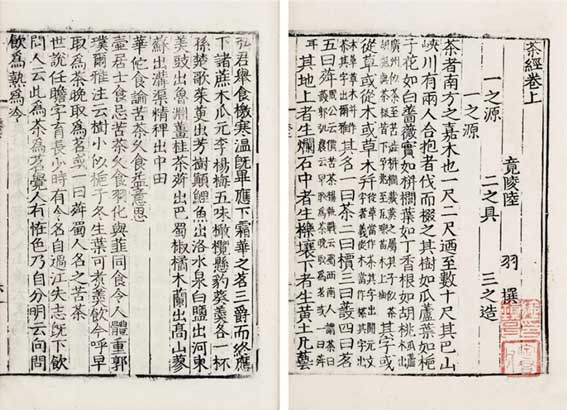
Sources:
- Cha Jing, Lu Yu. Ediciones Librería Argentina, Madrid, 2011.
- Tea in China: A Religious and Cultural History, James A. Benn University of Hawaiʻi Press, 2015.
